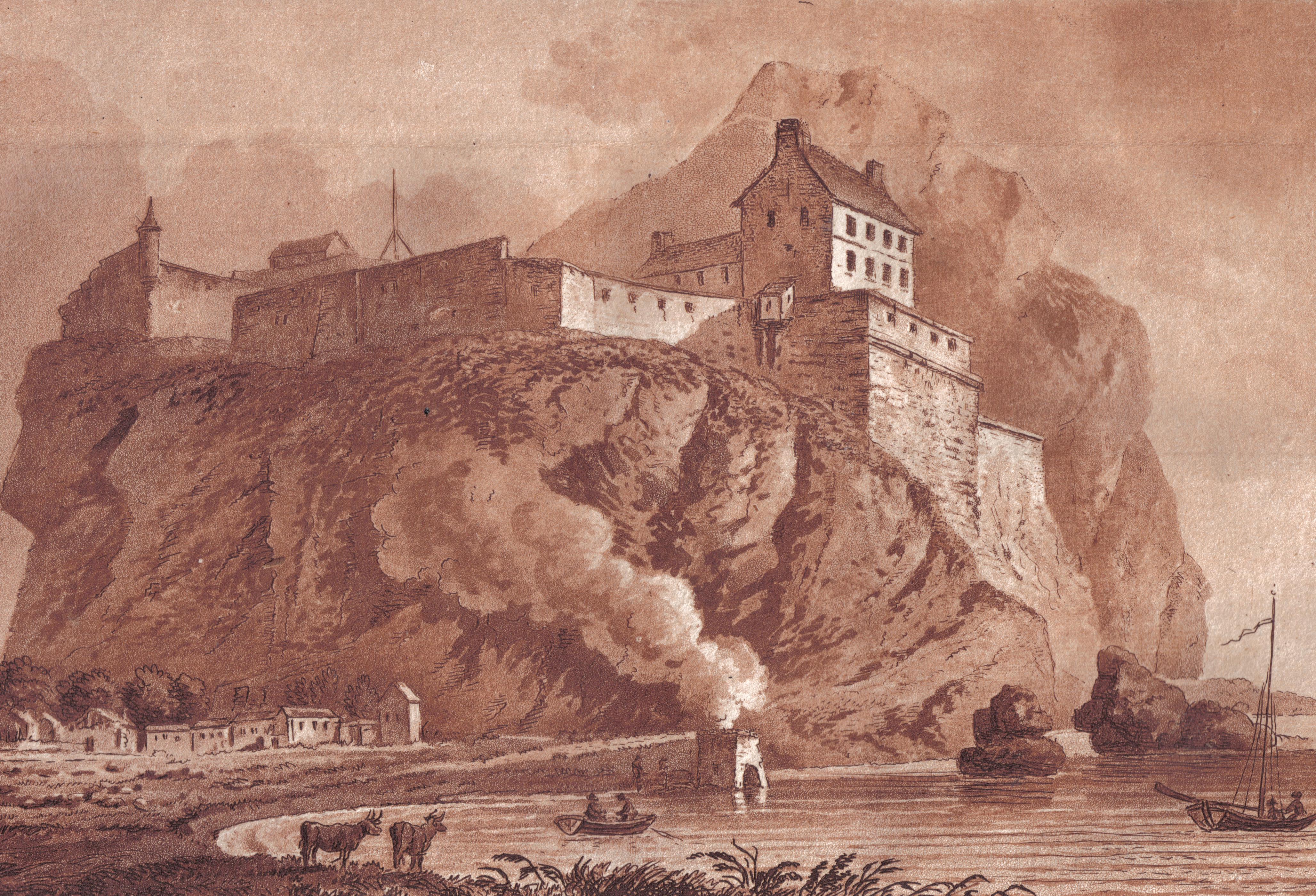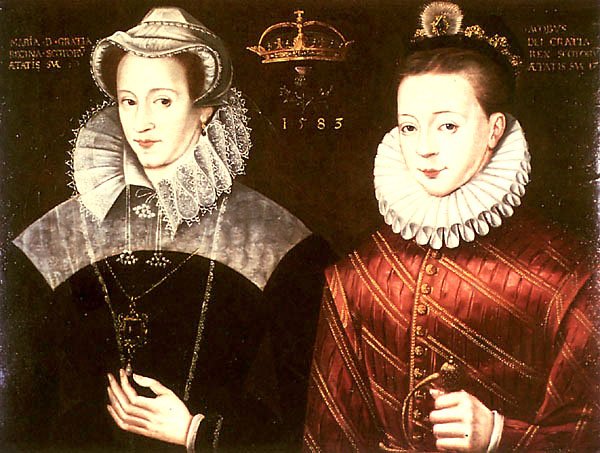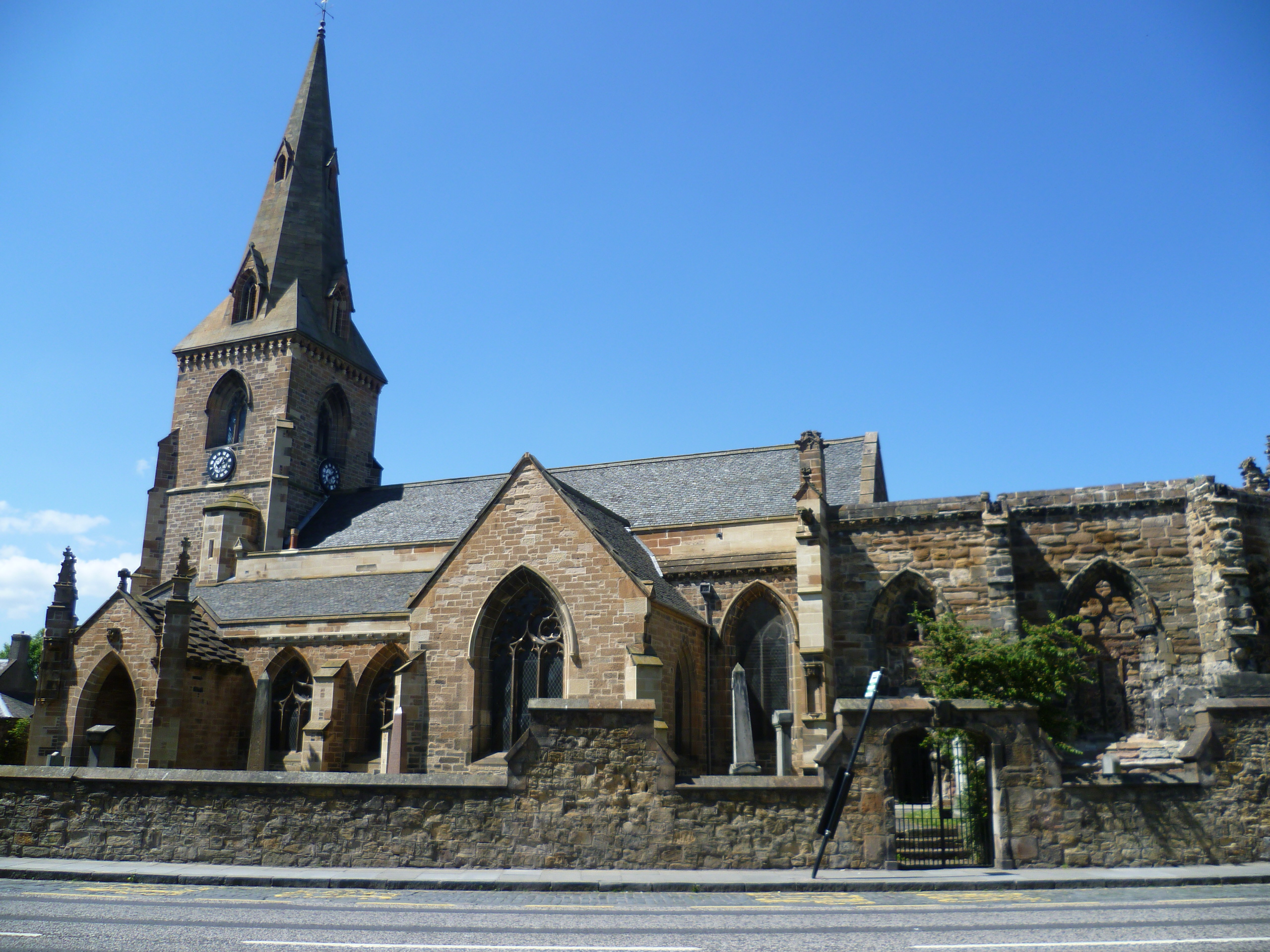|
William Stewart Of Caverston
William Stewart of Caverston and Traquair (died 1605), was a Scottish landowner and Captain of Dumbarton Castle. Career He was a brother of Sir John Stewart of Traquair. His lands were at Caverston, or Caberston, sometimes given as "Taberstoun". Caverston was a property of the Traquair Stewarts in Innerleithen parish with a fortified house. No visible traces of Caberston Tower remain. Regent Moray gave William Stewart a charter of the lands of "Caverstoun" in January 1568, which notes that the lands in Peebleshire were formerly held from the Earl of Bothwell and were part of the Barony of Crichton. Stewart was appointed an extraordinary attendant at the court of James VI of Scotland in 1580. An extraordinary postholder was not expected to be present at court at all times, unless required by the Lord Chamberlain, and might not have a fee. He was one of the 25 gentlemen appointed to ride and pass to the fields with James VI in May 1580, with Roger Aston, Patrick Hume of Polwart ... [...More Info...] [...Related Items...] OR: [Wikipedia] [Google] [Baidu] |
Dumbarton Castle
Dumbarton Castle (, ; ) has the longest recorded history of any stronghold in Scotland. It sits on a volcanic plug of basalt known as Dumbarton Rock which is high and overlooks the Scottish town of Dumbarton. History Dumbarton Rock was formed between 330 and 340 million years ago, during the Early Carboniferous period, a time of widespread volcanic activity in the area where Glasgow is now situated; over time, the softer exterior of the volcano weathered away, leaving behind a volcanic plug of basalt. Iron Age At least as far back as the Iron Age, this has been the site of a strategically important settlement, as evidenced by archaeological finds. The people that came to reside there in the era of Roman Britain were known to have traded with the Romans. However the first written record about a settlement there was in a letter that Saint Patrick wrote to King Ceretic of Alt Clut in the late 5th century. Early Medieval era David Nash Ford has proposed that Dumbarton was th ... [...More Info...] [...Related Items...] OR: [Wikipedia] [Google] [Baidu] |
Sir John Carmichael
Sir John Carmichael (died 16 June 1600) was a Scottish soldier, the Keeper of Liddesdale, a diplomat, and owner of Fenton Tower at Kingston, East Lothian. Career He was the son of John Carmichael and Elizabeth Somerville, a daughter of Hugh Somerville, 5th Lord Somerville. The estate and village of Carmichael, South Lanarkshire, Carmichael is in South Lanarkshire. He was active in the Marian Civil War, and in September 1571 the Regent Morton, Earl of Morton wrote approvingly of an incident where he had chased and fought some horsemen of Mary, Queen of Scots, Queen Mary's side near Edinburgh. He was appointed Lord Warden of the Marches, warden of the Scottish West March. In 1573 Regent Morton went to Jedburgh to hold justice courts, and he sent Carmichael to arrest Black John Ormeston for his involvement in the murder of Henry Stuart, Lord Darnley, Lord Darnley. In 1574 Carmichael was recommended for a pension from England, given to those of power and influence who could support ... [...More Info...] [...Related Items...] OR: [Wikipedia] [Google] [Baidu] |
William Stewart Of Houston
Sir William Stewart of Houston (c. 1540 – c. 1605) was a Scottish soldier, politician and diplomat. He is often known as "Colonel Stewart", or the Commendator of Pittenweem. Life He began his career as a soldier in the Netherlands, where he became a colonel and entered into communications with Lord Burghley on the progress of affairs. In 1582 he was in Scotland, and James VI made him captain of his guard. He visited the English court in the king's interest in 1583 with John Colville and George Young (diplomat). Later that year, Stewart helped to free James from William Ruthven, 1st Earl of Gowrie, and to bring back his cousin James Stewart, Earl of Arran to power; these acts largely restored the young King James's position, after the Raid of Ruthven. On 4 September 1583 at Falkland Palace James VI ordered that Colonel Stewart be given some of the jewels that had belonged to his mother Mary, Queen of Scots, including a gold cross previously given to his favourite, Esmé S ... [...More Info...] [...Related Items...] OR: [Wikipedia] [Google] [Baidu] |
James Stewart, Earl Of Arran
Captain James Stewart, Earl of Arran (died 1595) was created Earl of Arran by the young King James VI, who wrested the title from James Hamilton, 3rd Earl of Arran. He rose to become Lord Chancellor of Scotland and was eventually murdered in 1595. Career He was the second son of Andrew Stewart, 2nd Lord Ochiltree, by his wife Agnes, the daughter of John Cunningham, 5th of Capringtoun, Ayrshire. Stewart's sister, Margaret, was married to the reformer John Knox. In April 1573, James was sent as a "pledge" or hostage to England for the security of the English army and artillery sent to the "Lang Siege" of Edinburgh Castle, which was held by supporters of Mary Queen of Scots. Regent Morton gave him £55 for his expenses in England. He was Captain of the Royal Guard of James VI, served with the Dutch forces in the Netherlands against the Spanish, and returned to Scotland in 1579. James quickly became a favourite of the young king, and in 1580 was made Gentleman of the Bedchamber ... [...More Info...] [...Related Items...] OR: [Wikipedia] [Google] [Baidu] |
Robert Bowes (diplomat)
Robert Bowes (1535?–1597) was an English diplomat, stationed as permanent ambassador to Scotland from 1577 to 1583. Family Robert Bowes was the fifth but second surviving son of Richard Bowes (d. 10 November 1558) and Elizabeth Aske. He had four elder brothers, Ralph, Francis, George (d. 20 August 1580), and Christopher, and seven sisters: Bridget, who married Thomas Hussey; Anne, who married Marmaduke Vincent; Muriel, who married John Jackson; Margery, who married the Scottish reformer John Knox; Elizabeth, who married George Bainbrigge; Margaret, who married firstly Thomas Middleton and secondly Ambrose Birkbeck; and Jane. Career He was educated at Queens' College, Cambridge. He served under his father in the defence of the borders. In 1569 he was sheriff of the county palatine of Durham, and helped his brother, Sir George Bowes, to hold Barnard Castle against the rebel earls. Afterwards he was sent in command of a troop of horse to protect the west marches. In 1571 ... [...More Info...] [...Related Items...] OR: [Wikipedia] [Google] [Baidu] |
Mary, Queen Of Scots
Mary, Queen of Scots (8 December 1542 – 8 February 1587), also known as Mary Stuart or Mary I of Scotland, was List of Scottish monarchs, Queen of Scotland from 14 December 1542 until her forced abdication in 1567. The only surviving legitimate child of James V of Scotland, Mary was six days old when her father died and she inherited the throne. During her childhood, Kingdom of Scotland, Scotland was governed by regents, first by the heir to the throne, James Hamilton, Earl of Arran, and then by her mother, Mary of Guise. In 1548, she was betrothed to Francis II of France, Francis, the Dauphin of France, and was sent to be brought up in Kingdom of France, France, where she would be safe from invading Kingdom of England, English forces during the Rough Wooing. Mary Wedding of Mary, Queen of Scots, and Francis, Dauphin of France, married Francis in 1558, becoming queen consort of France from his accession in 1559 until his death in December 1560. Widowed, Mary Entry of Mary, Q ... [...More Info...] [...Related Items...] OR: [Wikipedia] [Google] [Baidu] |
Association Of Mary, Queen Of Scots, And James VI
The Association was the name given to plans in the 1580s for Mary, Queen of Scots, to return to Scotland and rule jointly with her son, King James VI. The plans came to nothing, despite diplomatic efforts. Background Mary was captured by a confederacy of her nobles at the battle of Carberry Hill, battle of Carberry. She was taken to Lochleven Castle where she Act Anent the demission of the Crown in favour of our Sovereign Lord, and his Majesty's Coronation 1567, abdicated and her son James VI was coronation of James VI, crowned at the Church of the Holy Rude at Stirling on 28 July 1567. Mary escaped from Lochleven and joined her Scottish supporters, but was defeated at the battle of Langside near Glasgow. She rode south and took a boat to England. Elizabeth I decided to keep Mary, who was potentially a claimant to the English throne, a prisoner in England. Scotland was ruled on James's behalf by a series of Regents. Mary had supporters in Scotland and in France. The French kings ... [...More Info...] [...Related Items...] OR: [Wikipedia] [Google] [Baidu] |
Raid Of Ruthven
The Raid of Ruthven, the kidnapping of King James VI of Scotland, was a political conspiracy in Scotland which took place on 23 August 1582."Ruthven, William", by T. F. Henderson, in ''Dictionary of National Biography'', Volume 50 (Smith, Elder, & Co., 1897) It was composed of several Presbyterian nobles, led by William Ruthven, 1st Earl of Gowrie, who abducted the king. The nobles intended to reform the government of Scotland and limit the influence of French and pro-Catholic policy, and to prevent or manage the return of Mary, Queen of Scots from England to rule with her son in an " association". Their short-lived rule of around 10 months is known as the "Ruthven" or "Gowrie Regime". Scottish coup d'état Ruthven Castle In July 1582 the discontented lords made a bond to one another in their enterprise to displace Catholic influences around the young king. Their party became known as the "Lords Enterprisers", and their opponents were the King's favourite, the Frenchman Esmé ... [...More Info...] [...Related Items...] OR: [Wikipedia] [Google] [Baidu] |
Dalkeith
Dalkeith ( ; , ) is a town in Midlothian, Scotland, on the River Esk. It was granted a burgh of barony in 1401 and a burgh of regality in 1541. The settlement of Dalkeith grew southwestwards from its 12th-century castle (now Dalkeith Palace). Dalkeith has a population of 12,342 people according to the 2011 census. The town is divided into four distinct areas: Dalkeith proper with its town centre and historic core; Eskbank (considered to be the well-heeled neighbourhood of Dalkeith with many large Victorian and newer houses) to its west; Woodburn (primarily a working class council estate with pockets of new housing developments) to its east; and Newbattle (a semi-rural village with its abbey) to the south. Dalkeith is the main administrative centre for Midlothian. It is twinned with Jarnac, France. In 2004, Midlothian Council re-paved Jarnac Court in honour of Dalkeith and Jarnac's long standing link. On the north-eastern edge of Dalkeith at Woodburn is the Dalkeith Ca ... [...More Info...] [...Related Items...] OR: [Wikipedia] [Google] [Baidu] |
Duke Of Lennox
The title Duke of Lennox has been created several times in the peerage of Scotland, for Clan Stewart of Darnley. The dukedom, named for the district of Lennox in Dumbarton Dumbarton (; , or ; or , meaning 'fort of the Britons (historical), Britons') is a town in West Dunbartonshire, Scotland, on the north bank of the River Clyde where the River Leven, Dunbartonshire, River Leven flows into the Clyde estuary. ..., was first created in 1581, and had formerly been the Earldom of Lennox. The second duke was made Duke of Richmond; at his death, the dukedom of Richmond became extinct. The fourth duke was also created Duke of Richmond; at the death of the sixth duke, both dukedoms became extinct. The Dukedom of Richmond and one month later that of Lennox were created in 1675 for Charles Lennox, an illegitimate son of Charles II. The Duke of Richmond and Lennox was created Duke of Gordon in 1876. Thus, the duke holds four dukedoms (if including Aubigny-sur-Nère), more ... [...More Info...] [...Related Items...] OR: [Wikipedia] [Google] [Baidu] |
David Masson
David Mather Masson (2 December 18226 October 1907), was a Scotland, Scottish academic, supporter of women's suffrage, literary critic and historian. Biography Masson was born in Aberdeen, the son of Sarah Mather and William Masson, a stone-cutter. He was educated at Aberdeen Grammar School under James Melvin and at Marischal College, University of Aberdeen. Intending to enter the Church, he proceeded to the University of Edinburgh where he studied theology under Thomas Chalmers. Masson remained friendly with Chalmers until his death 1847. However, abandoning his aspirations to the ministry, be returned to Aberdeen to undertake the editorship of the ''Banner'', a weekly paper devoted to the advocacy of Free Church of Scotland (1843–1900), Free Kirk principles. After two years he resigned this post and went back to Edinburgh to pursue a purely literary career. There he wrote a great deal, contributing to ''Fraser's Magazine'', ''Dublin University Magazine'' (in which appe ... [...More Info...] [...Related Items...] OR: [Wikipedia] [Google] [Baidu] |
Esmé Stewart, 1st Duke Of Lennox
Esmé Stewart, 1st Duke of Lennox, 1st Earl of Lennox, 6th Seigneur d'Aubigny (26 May 1583) of the Château d'Aubigny at Aubigny-sur-Nère in the ancient Provinces of France, province of Berry, France, Berry, France, was a Catholic French nobleman of Scottish ancestry who on his move to Scotland at the age of 37 became a favourite of the 13-year-old King James VI and I, James VI of Scotland (and later I of England). Esmé Stewart was the first cousin of James' father, Henry Stewart, Lord Darnley (son and heir apparent of Matthew Stewart, 4th Earl of Lennox). Despite his conversion to Calvinism he was never trusted by the Scots and returned to France where he ended his days. Sir James Melville described him as "of nature upright, just and gentle". He was the first to popularise the firstname Esmé (spelt also Edme, etc.) in the British Isles. Early life He was the son and heir of John Stewart, 5th Seigneur d'Aubigny (d. 1567), by his wife Anne de la Queuille, a French noblewoma ... [...More Info...] [...Related Items...] OR: [Wikipedia] [Google] [Baidu] |






